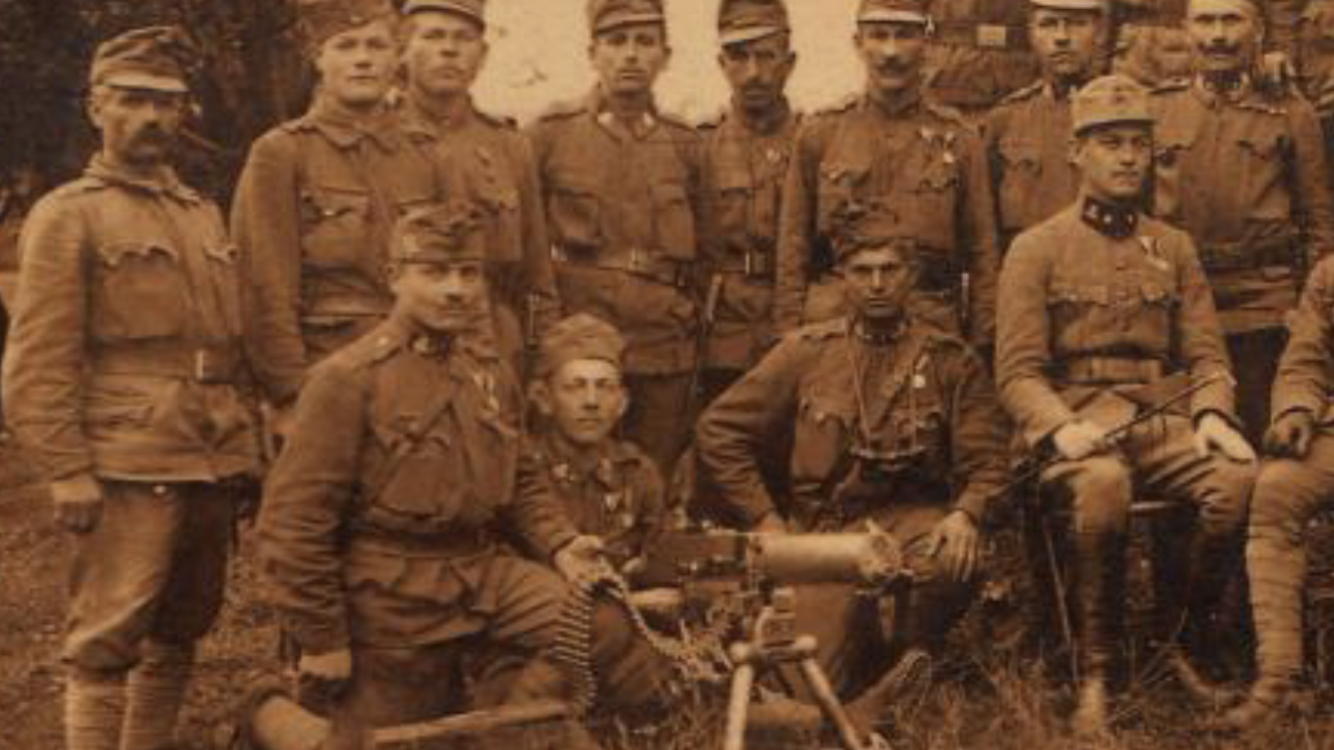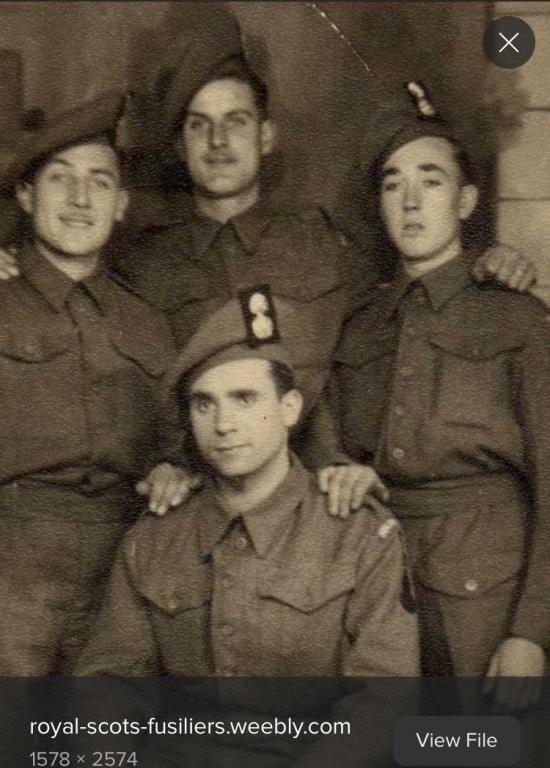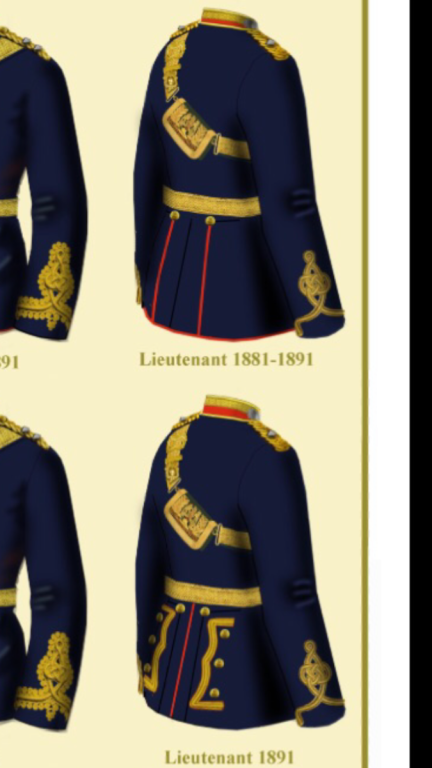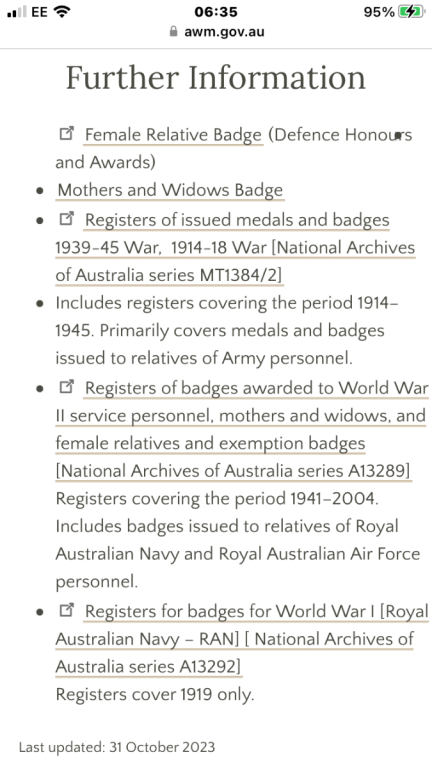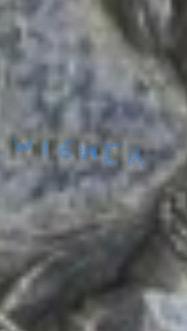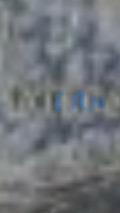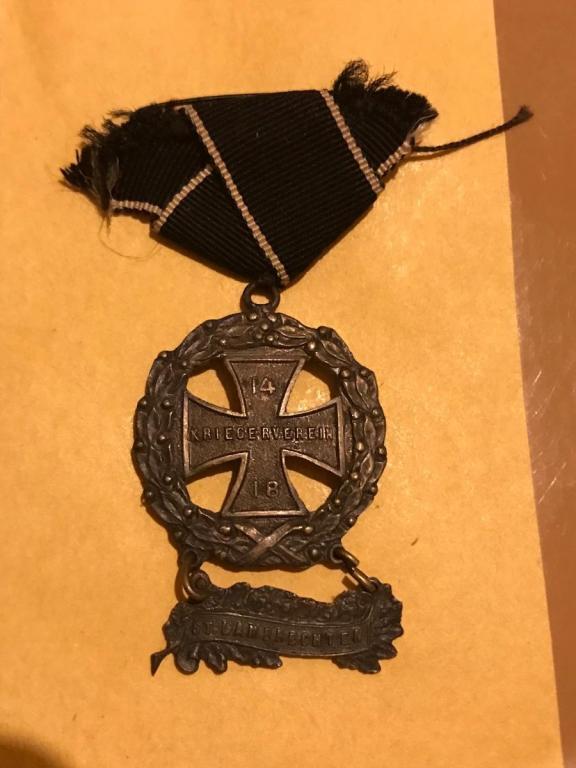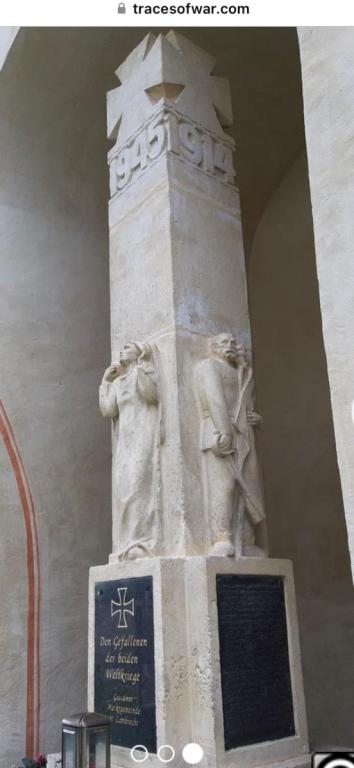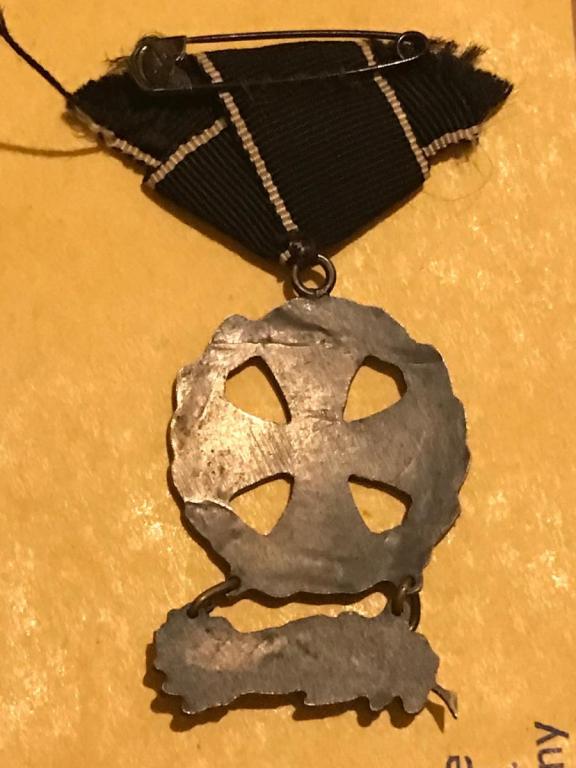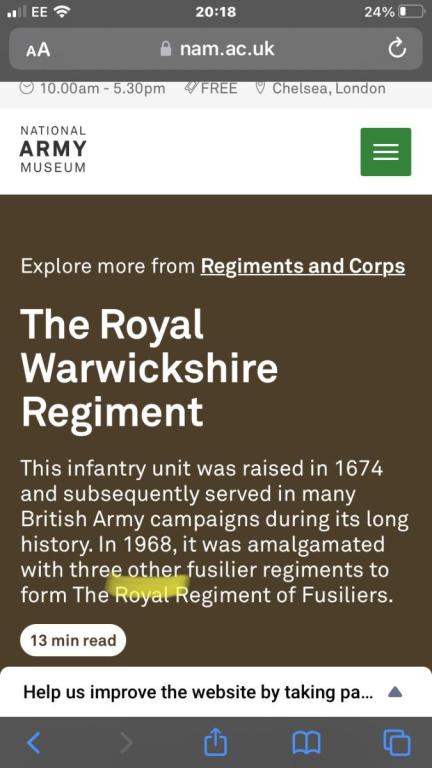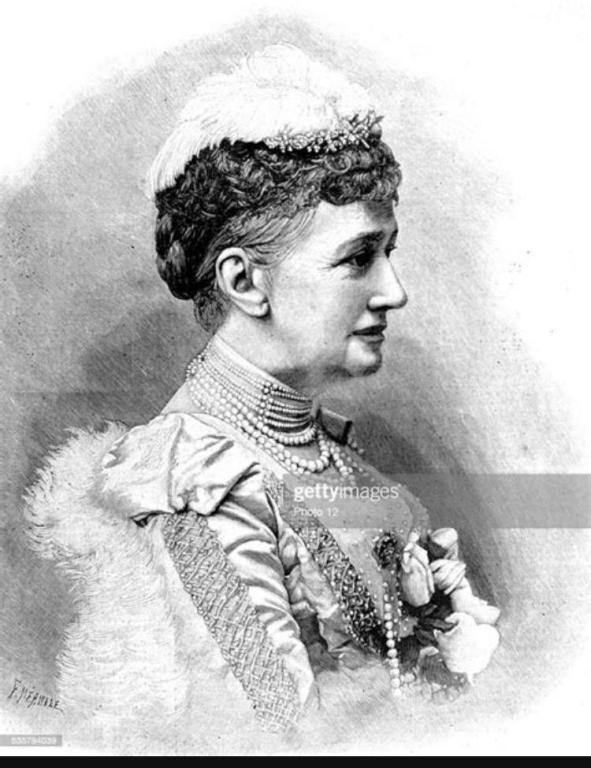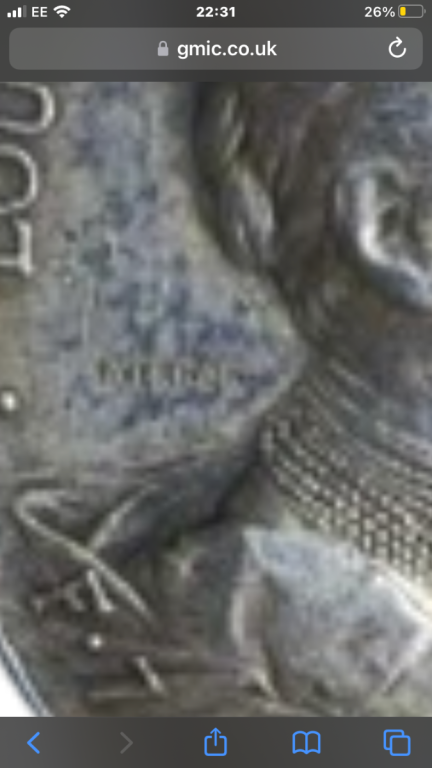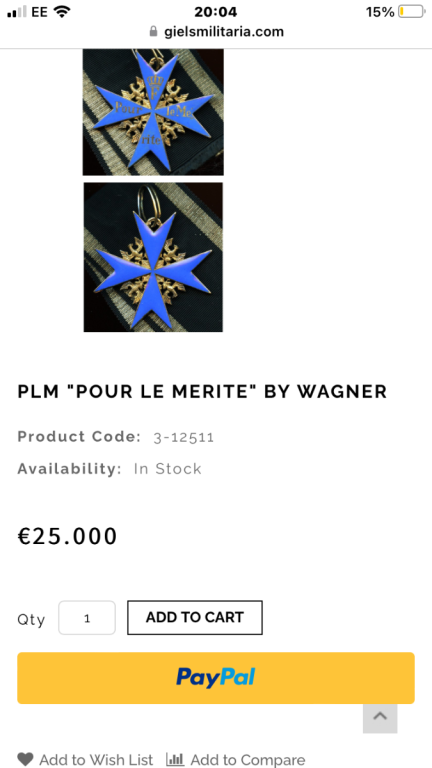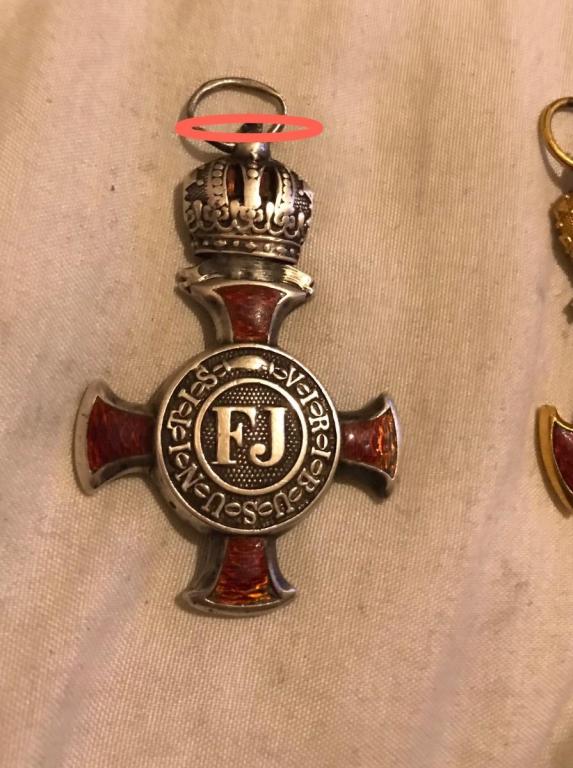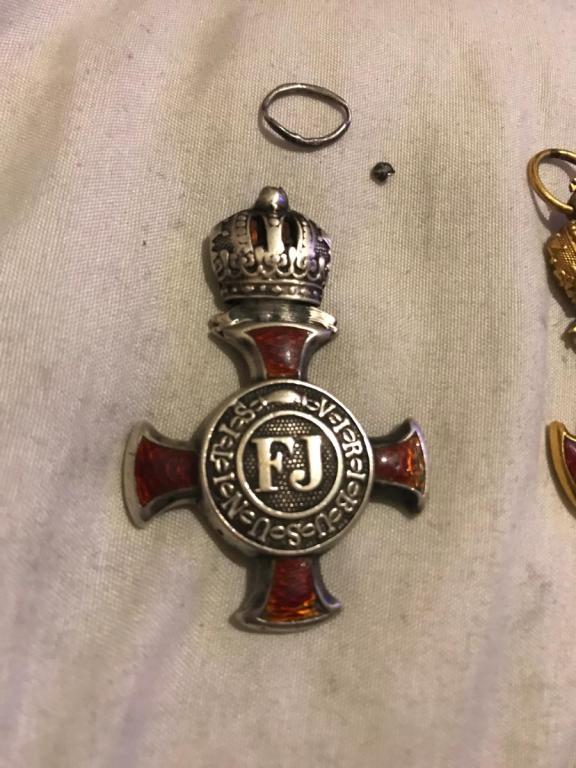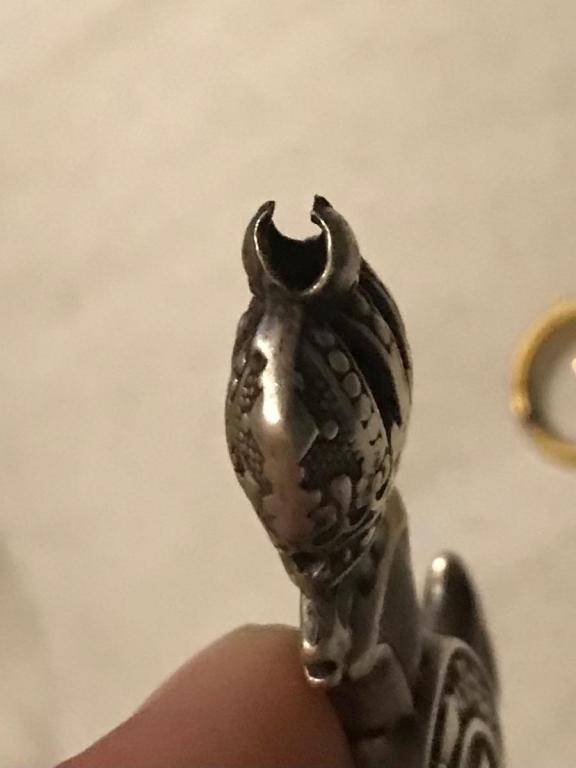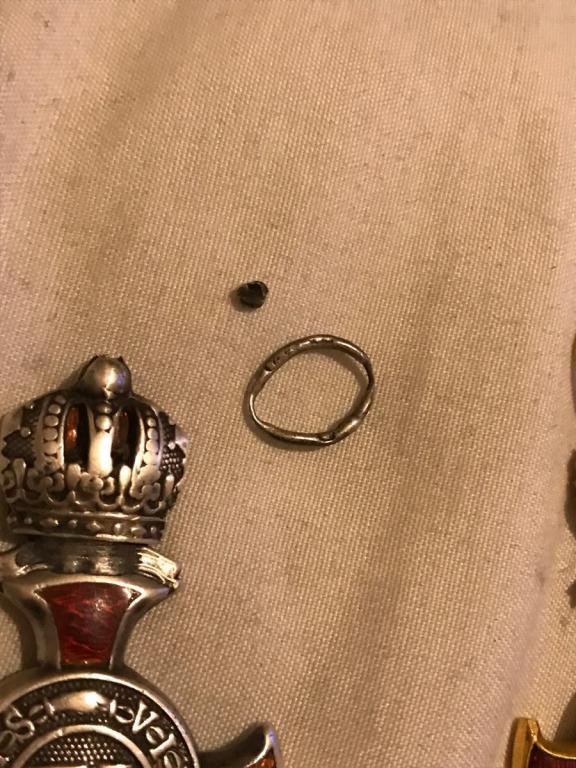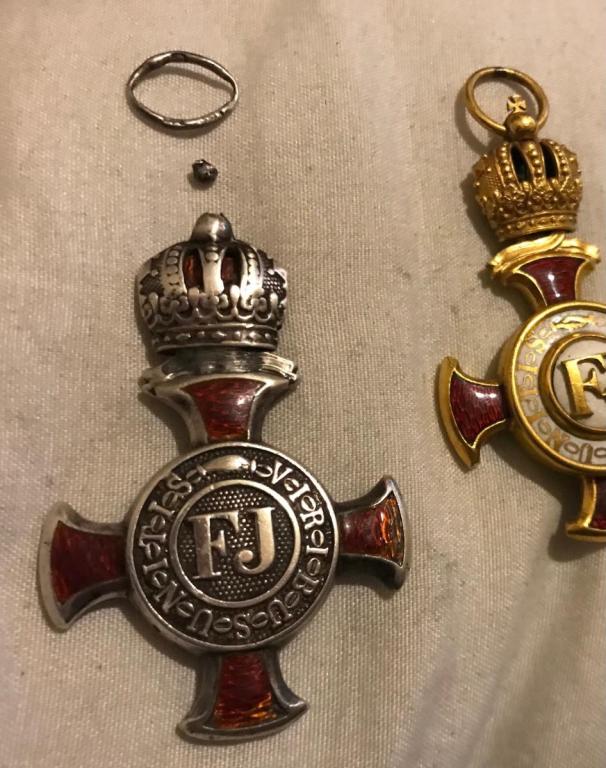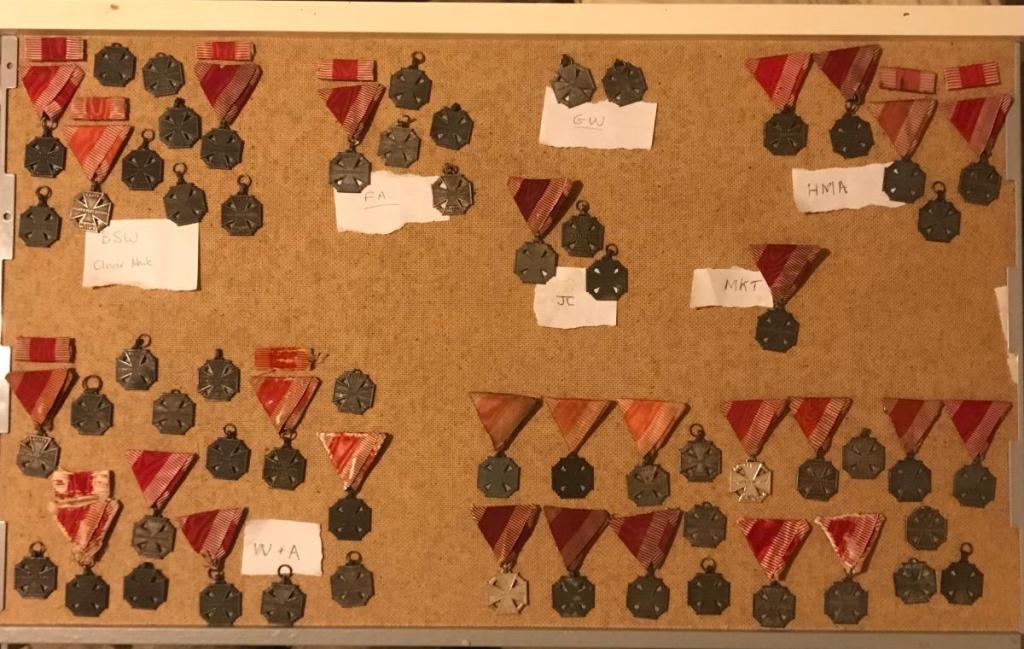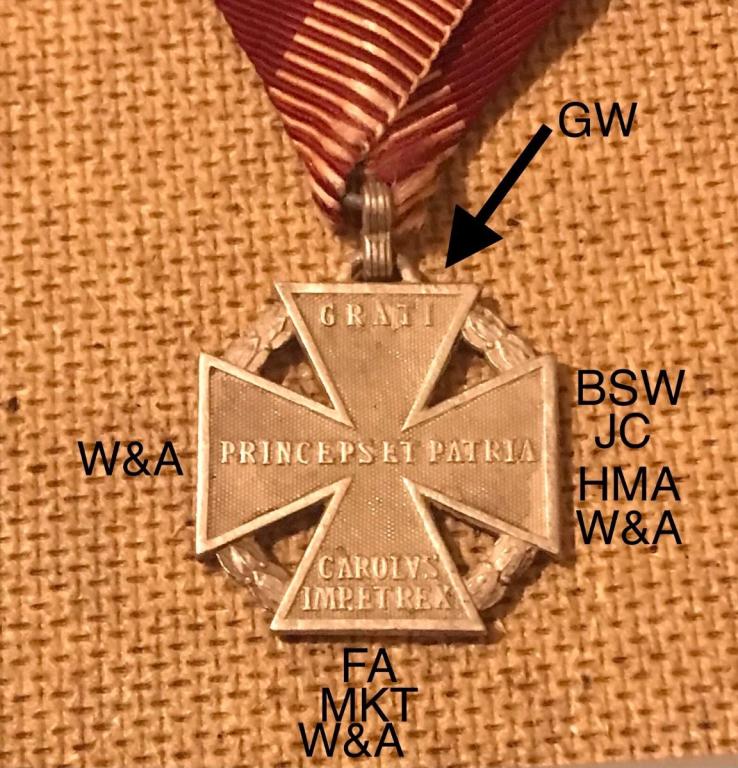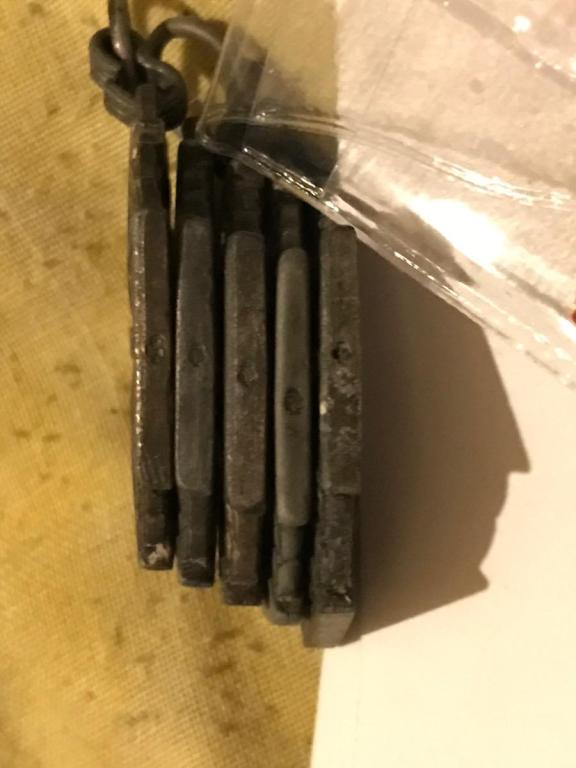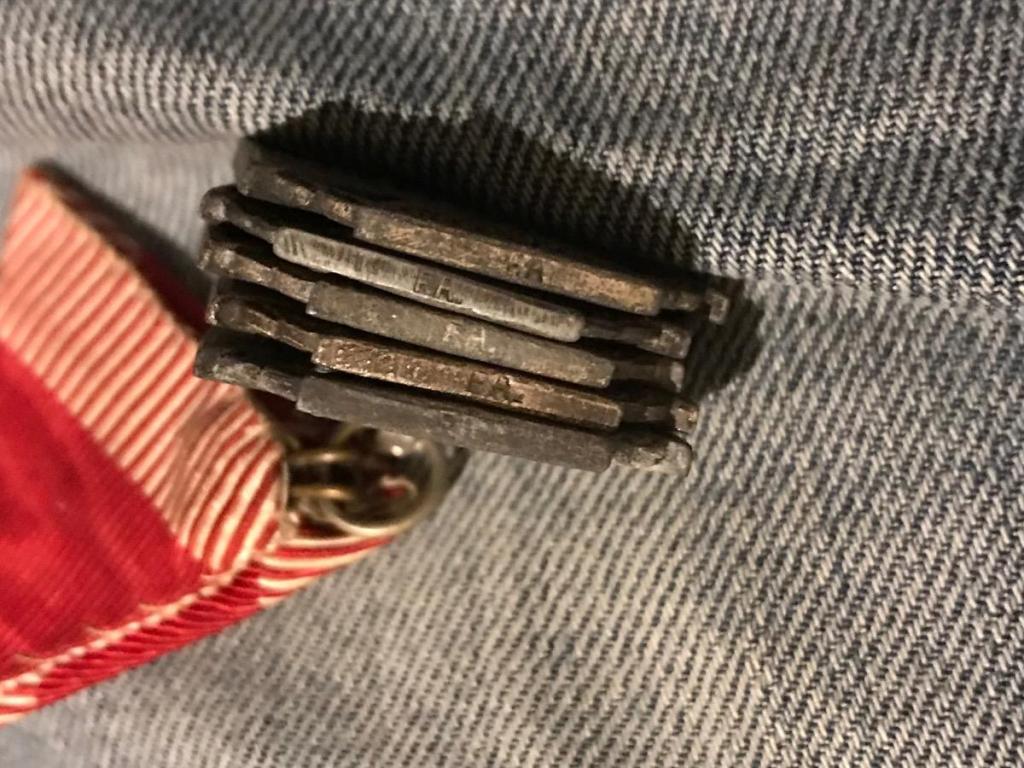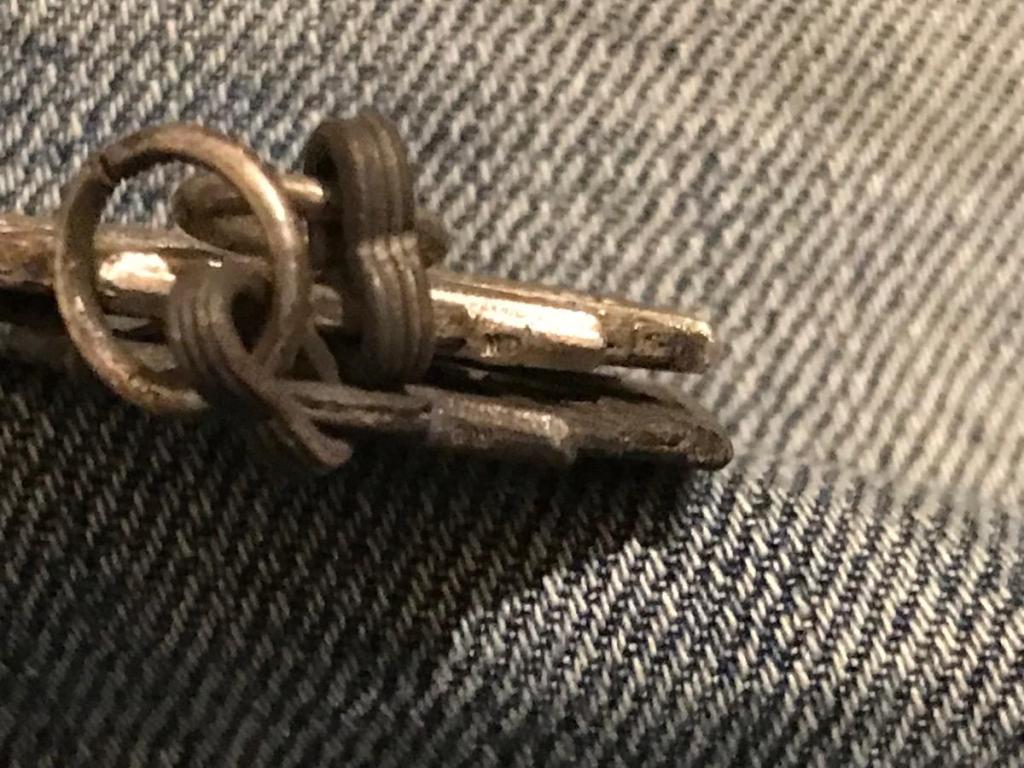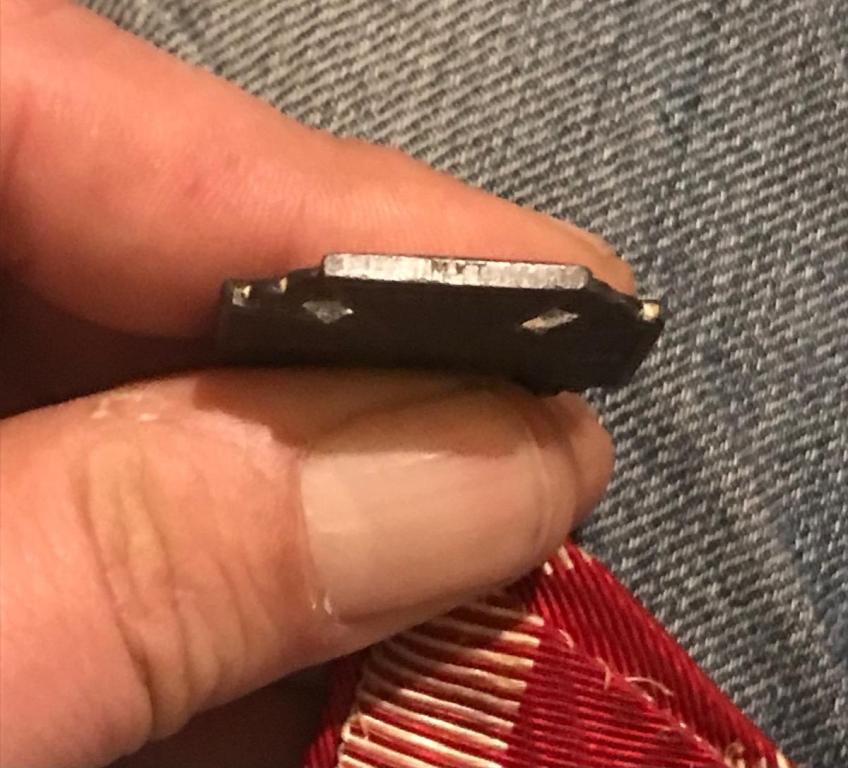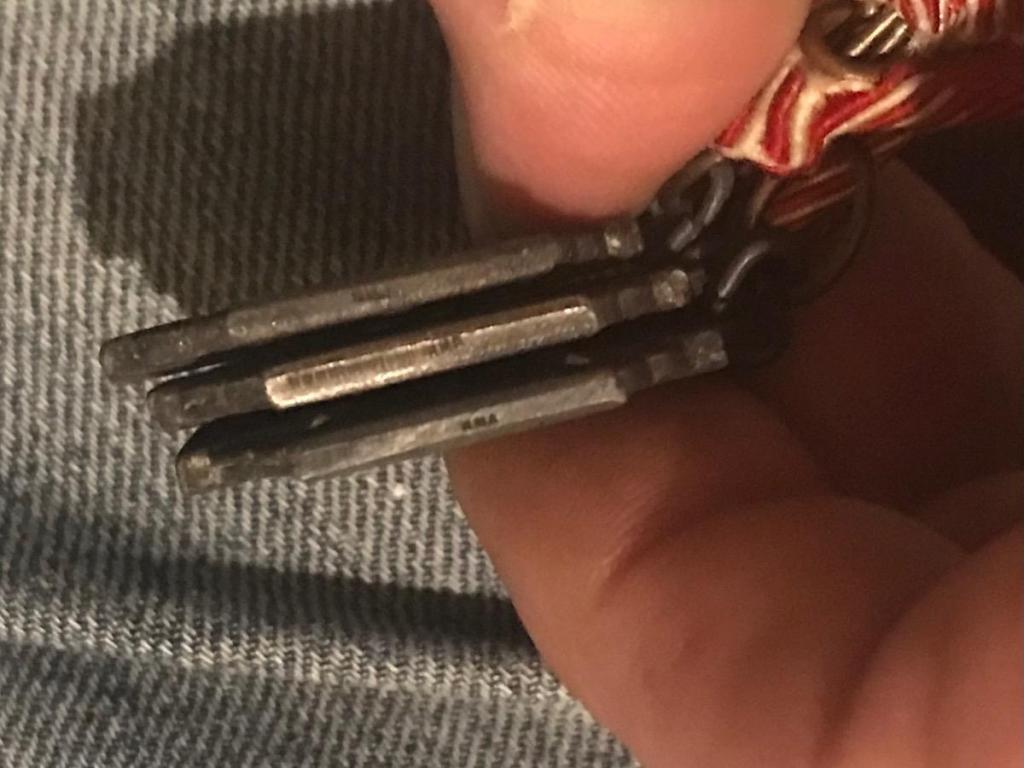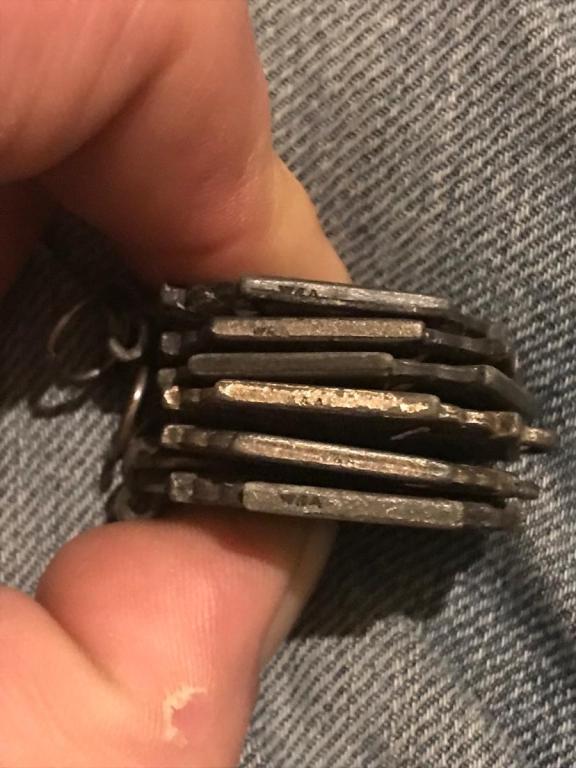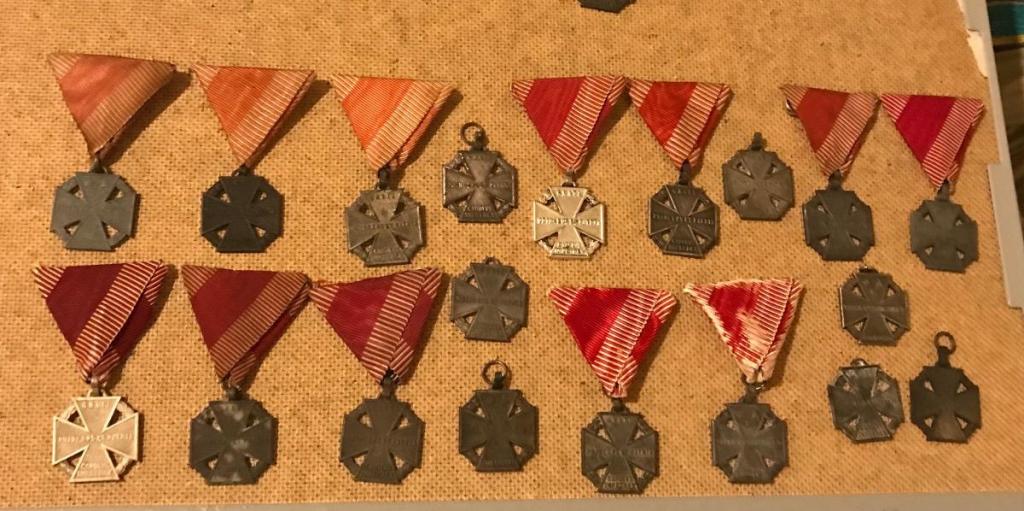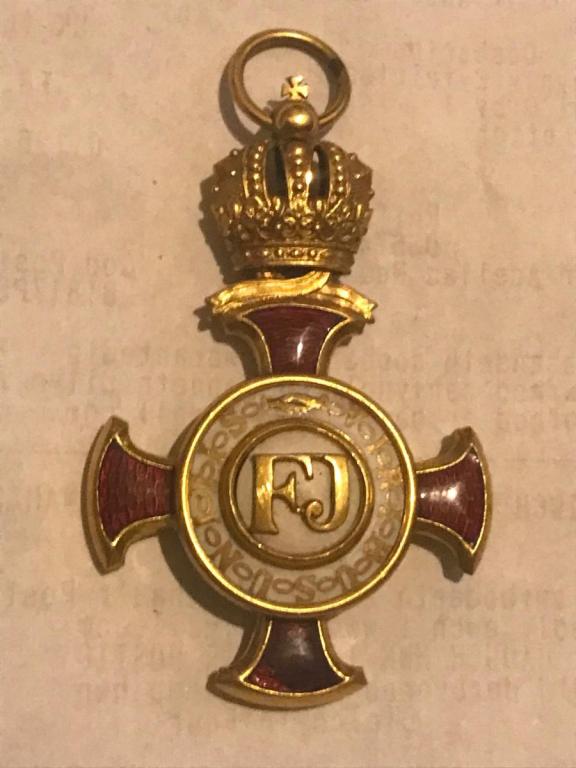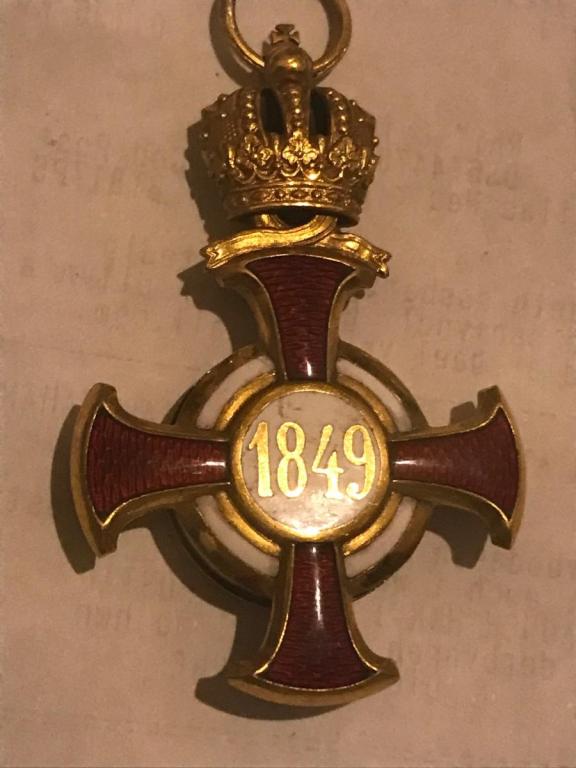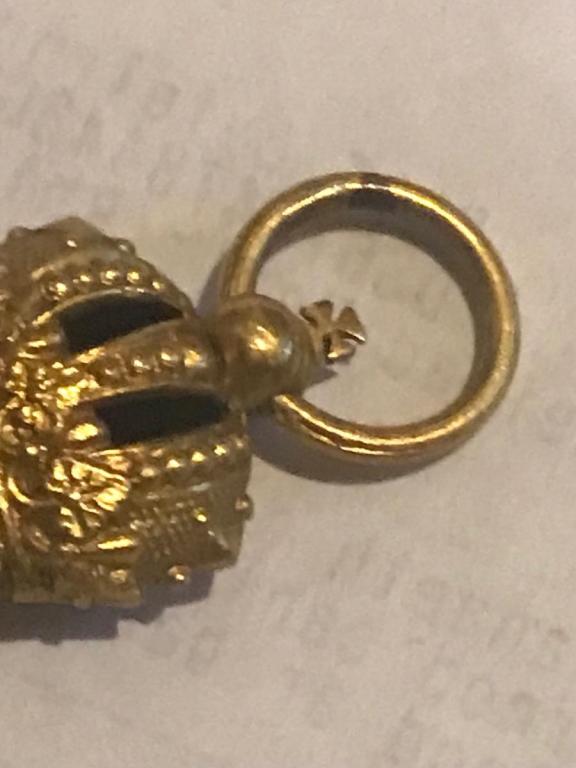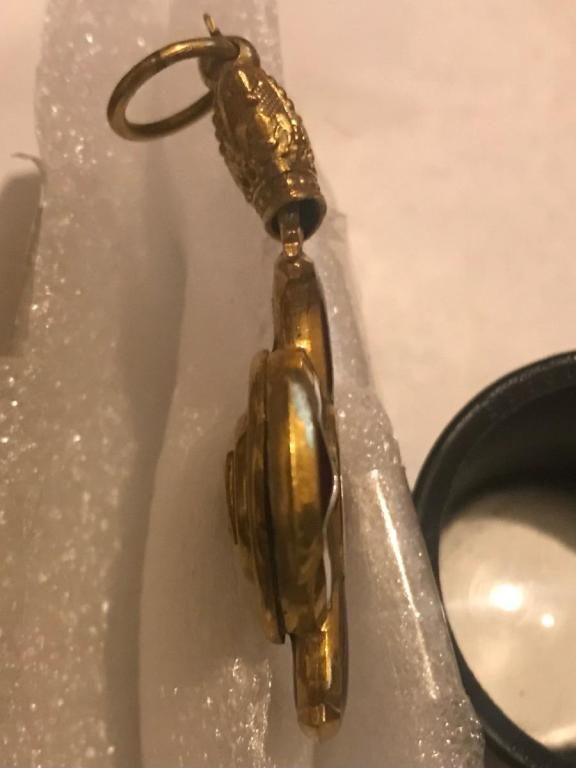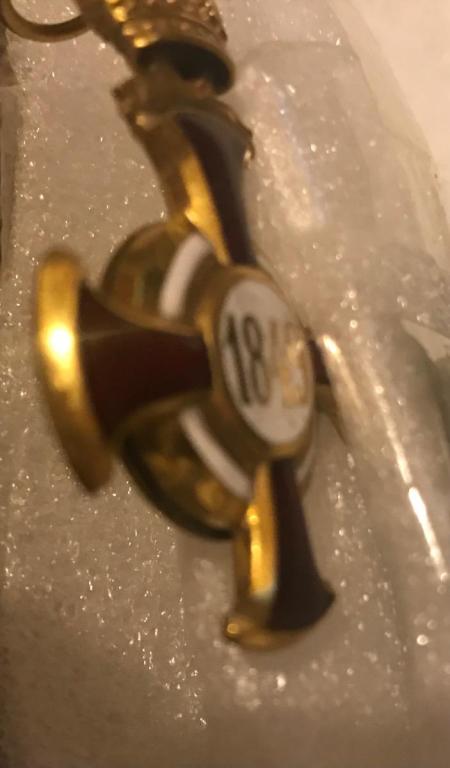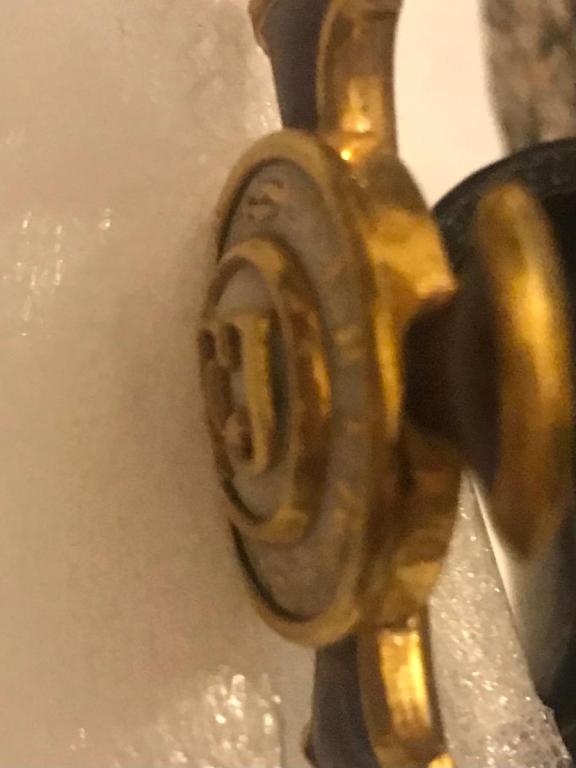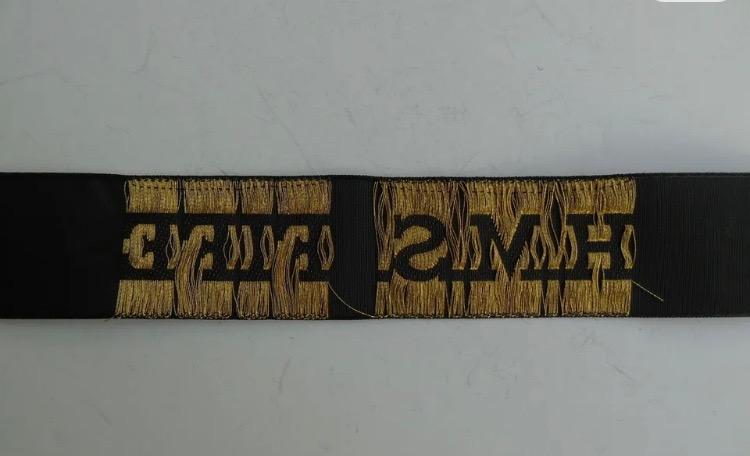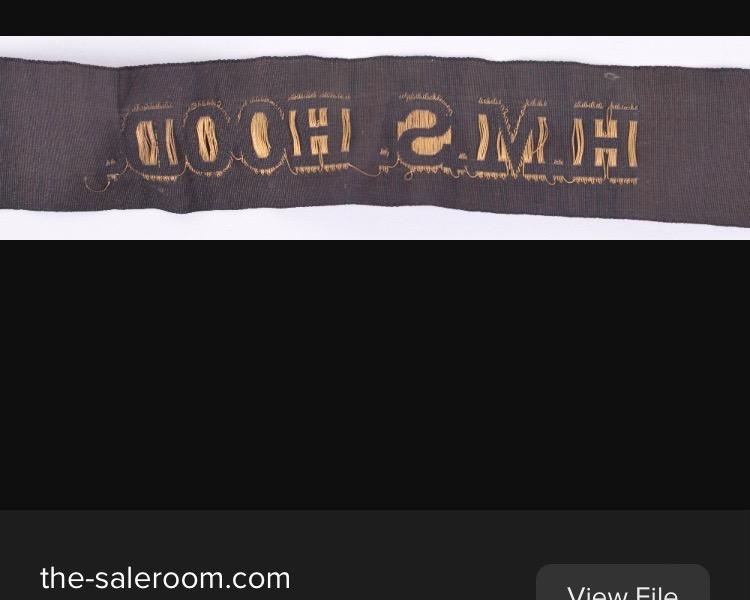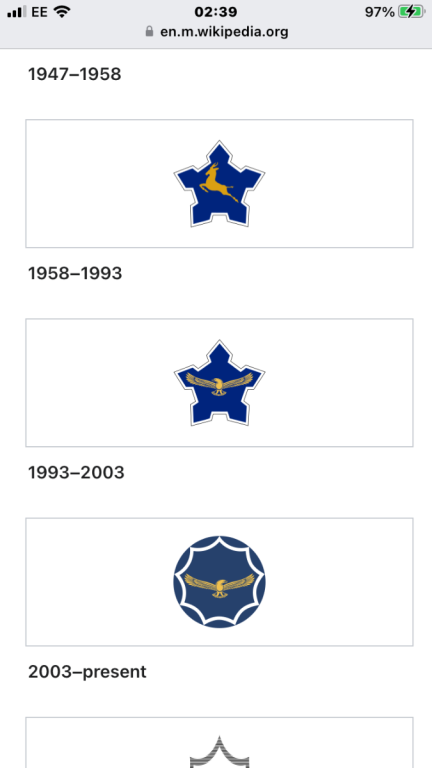-
Posts
1,455 -
Joined
-
Last visited
-
Days Won
21
Content Type
Profiles
Forums
Blogs
Gallery
Events
Store
Everything posted by Farkas
-
You’re welcome 🍻 The Pitt buttons are post 1895, that is when they moved to Maddox Street. I’d agree with your initial feeling that this is a Victorian/Edwardian worn tunic. As you said yourself, when uniforms changed the officers had some leeway, they purchased their own uniforms. 👇 (I admit I have a lively imagination..,) I’d say this man wore his Victorian style as long as he could before the alterations were done (maybe reluctantly) post 1902. Perhaps he had a role to play in the coronation even… The new King Edward vii was to have a crown usually shown a slightly different shape to the later George crowns but in 1902/3 if commissioned to make some KC buttons I can imagine Pitt&Co would not have an official design to follow as yet. The entire look of the 6 buttons is ‘ropey’ as, I was surprised that they were from a reputable maker at all… But who knows eh 🤷♂️ (😁 I did say I have an imagination 😁) tony 🍻 pS QVC Buttons… If you can tell me what is on the reverse of the Victorian buttons I can maybe narrow down the date a bit more.
-
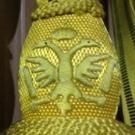
Scottish Badge Collection
Farkas replied to Terry37's topic in Great Britain: Militaria: Badges, Uniforms & Equipment
I think it is a definite yes Terry. 😊 From 1948 they switched to the square tartan. So these are black backings as this picture is from ww2. No doubt intentional rectangle shaped. And your display already looks awesome… tony 🍻 -
I think I can explain some of it… 🤞 I’ve got two Royal Artillery tunics, one 1900-1905 and the other an older Victorian tunic. The following is based on RA regs but seem to explain your tunic, which is very nice btw. In 1881 and 1891 the officers tunic was changed. The red piping was changed and in 1891 all piping on the skirt/ bottom edge was discarded In 1881 the corners of the collar were rounded and in 1891 the corner of the skirt at the bottom of the buttons was squared. Rank insignia moved around too, collar, shoulder and sleeve lace all were used. Just to say again, this is all RA, the guards would have had their own variations. However… back to your tunic 😊 In 1891, the rear of officers tunics changed. Instead of a single button on either side, the was the addition of the ‘decorative’ pocket flaps. This was a significant change. Braiding and and 3 additional buttons on either side. Looking at yours, it appears the rear panel with the pockets/buttons is an alteration.I would say done to conform with the new regs and assuming it’s period then done in 1891. I don’t see why a modern day owner would change a pre ‘91 tunic to look like a newer one 👍 That then explains the buttons too. They have taken the 6 buttons from the cuffs to use on the tail, So, as the buttons on the cuffs then needed replacements, presumably in 1891, I reckon they might well be theatre made. i’ve several Indian made buttons with random looking crowns. These are period QVC buttons made in India 👇 Can you see anything on the buttons back to confirm or disprove this? 🤞 tony 🍻
-
👍 I clearly can’t argue with that Gents. I know I should just stay in my lane but I meant well 😊 🍻 cheers tony
-
Hi Gents, I’m nothing if not annoying, I apologise but please bear with me, I will leave it be after this, 👍 I can see where I think Vernon would fit but to do that I am taking the ‘black’ (impressed?) parts as the letters, is that how you see it? Myself I would expect the letters to be raised and therefore show as ‘white’. When I am looking at it like that I see WIENER… Anyway…. Good luck gents I’m gonna leave ya to it, 😊 Its a lovely little thing for sure. tony 🍻
-

German ‘Honour Cross’ on a tri-fold ribbon.
Farkas replied to Farkas's topic in Austro-Hungarian Empire
cheers both, it’s not just me then, these aren’t that common are they. When I saw it I wasn’t sure if the ribbon was gonna be legit, but couldn’t remember the last time I saw one of these on any trifold, I had to take the punt, even with 7 quid postage. A neat ribbon and good looking kreuz too. tony 🍻 🏴🇬🇧 -

Question about - Pro Patria - Ehrenzeichen der Ehrenlegion.
Farkas replied to Farkas's topic in Austro-Hungarian Empire
Hi Gents, I thought I might add this here. An Austrian kriegervereine association piece with a “St. Lambrechten” clasp/link for veterans of the 1914-18 war. Sankt Lambrech is in Styria, Tyrol I believe. Seems popular for skiing nowadays. There is still today a memorial to the fallen of both wars to be found in the abbey there. tony 🍻 -
(belated) Thanks Gents, your positive vibes are appreciated… I’m still enamoured with it! cheers tony 🍻
-
Hi Gents, though a German medal from the 30’s doesn’t really belong in this section, I thought I’d sneak it in 😉 I was lucky enough to nab this the other day, it came from an Austrian seller and was just as cheap as these crosses normally are, which surprised me bearing in mind the ribbon. From Wikipedia : “ By a decree dated 30 November 1938, the State Minister of the Interior introduced these awards into the Ostmark (the name of Austria after it was annexed by Nazi Germany). By 1940, it had also been approved for persons of German heritage from seized lands of the Sudetenland, Czechoslovakia, Danzig, Saar and Memel.[1]Awarding of the cross to war participants of German heritage continued after the deadline for applications had closed within the previous boundaries of Germany. Such Honour Crosses were still being awarded as late as 1944. For all attached military personnel outside these regions, the Führer, through the ordinance of 30 June 1942, had already ordered approval of these awards.” Its the first one on a trifold that I’ve had the good fortune to pick up. 😊 cheers tony 🍻
-
Hi Rusticalex, not seen this thread before somehow… what a great read. I notice in the above one you question whether they are all his. I presume you mean the 2 ‘grenades’? Though most commonly associated with the Royal Artillery and Royal Engineers they are also the emblem for ‘fusiliers’. I found this I would be happy to say that all those are his. cheers tony 🍻
-

35 Karl Truppen Kreuz and counting. KTK.
Farkas replied to Farkas's topic in Austro-Hungarian Empire
Shocking! 😊 -

Certificate of the Service ..
Farkas replied to Sandy Reed's topic in Great Britain: Research, Documentation & History
Well done Sandy that’s awesome… If you’d let us know what you find I’d be very interested. cheers tony -

Certificate of the Service ..
Farkas replied to Sandy Reed's topic in Great Britain: Research, Documentation & History
Hello again! A bit more to add… I’m going to try and summarise a bunch of stuff I’ve been reading. It’s easier for me to rattle off a ‘list’ 👍 First, all RNavy records including your Fathers have survived and are available upon request provided that a death certificate or similar proof is supplied. His service number is P for ‘home base’ Portsmouth and the ‘JX’ is for ‘Seamen and Communicators’. His AB is indeed for Able (bodied) Seaman but as you thought it appears he was in fact a Commando. The Royal Marines have been around for 100’s of years. Commando units though, both of the army & navy, were only first created in ww2. As I understand it… The Royal Marines created their own separate commando units in 1942 but there were also ‘Royal Naval Beach Commandos’ The courses/qualifications your Father lists ie ‘small arms’ & ‘pre landing specialist’ are consistent with and would qualify him for this role. https://www.commandoveterans.org/RoyalNavalBeachCommandoMemo The RNBC not Royal Marines Commando role is consistent with his late war Far Eastern RN deployment and the early 1946 record cut off point, despite you knowing he served on for several years post war. All this and more is going to be in his records. Once you have them you will have the facts about his service. If you still then want to understand the context and attach background to his story you can. The unchallenged best source of information re units and their operations for you is going to be www.commandoveterans.org Everything about each unit and theatre of operation is on there. But first you need to get his records… https://www.gov.uk/get-copy-military-records-of-service/apply-for-the-records-of-a-deceased-serviceperson I genuinely think your Father had an interesting war. I’m sure you can find the answers you are looking for. Hopefully you share some with us on here… please just ask if you need a hand. best wishes tony 🍻 🏴🇬🇧 -
Hi Gents, I found a printed version of this image from 1898. Queen Louise of Denmark (1898) Denmark - 1898, Queen Louise of Denmark. In "Le Journal illustré", 10-16-1898. The signature looks to me like F. Pernile. However this is not the name on the medal/medallion.. which I believe is Weiner. After some digging I believe the engraver is one of the Wiener brothers, only Jacques was still alive in 1898, albeit in his eighties, so most likely him. ‘JACQUES WIENER (1815–1899) was the oldest of three brothers who were to become famous as medalists. Born in the Rhineland of Hungarian immigrants, he was apprenticed at the age of 13 to his uncle L. Baruch, a fine engraver in his own right. The two signed some earlier medals jointly. At the age of 30 Wiener was the first to conceive the idea of engraving in precise detail the exterior and interior of a monument on the obverse and reverse of a medal. He engraved with great delicacy ten medals of famous Belgian churches. This he followed with a series of 41 medals, issued between 1850 and 1865, illustrating the most famous European buildings. He also engraved the first Belgian stamps, and for many years was head of the government plant issuing these stamps.’ ‘Leopold (1823–1891) studied with his older brother Jacques and then became a pupil of David d'Angers in Paris. In 1847 he returned to Belgium and started engraving a series of large historical medals which commemorated contemporary events and became very popular. In 1864 he was appointed first engraver to the Belgian mint, holding the post until his death. He was responsible for all the currency of Leopold II – some 150 pieces. At the same time he continued striking medals. He also had a considerable reputation as a sculptor; several of his monumental works still adorn public places in Belgium.’ ‘Charles (1832–1888) was the third and youngest of the Wiener brothers and, perhaps, had the most brilliant career. He studied at Brussels and Paris where he was a student of Oudiné. In 1865 he settled at The Hague as engraver to the king of Holland, but moved to London, where he was assistant engraver at the Royal Mint. He then went to Lisbon as chief engraver of the Portuguese coins. Returning to Brussels in 1867, Charles devoted himself to medals, which he produced in large number, some in conjunction with his brother Jacques. His English pieces have best withstood the test of time. ‘ Given the absence of any record or even image of this piece yet it’s obvious high status from design to production of miniatures I’m inclined to say it wasn’t ever awarded to the masses, perhaps only to a small select group. A very nice thing… tony 🍻
-

Golden Cross of Merit. Goldenes Verdienstkreuz.
Farkas replied to Farkas's topic in Austro-Hungarian Empire
Can you imagine 😮 I just googled how much is a PLM and there’s one for €25,000!! That really would be like a scene from a Mr Bean movie 🥴 tony 🍻 -

Certificate of the Service ..
Farkas replied to Sandy Reed's topic in Great Britain: Research, Documentation & History
Hello Sandy, I hope we can initially find a mention or two of your Father to motivate your continued search… There are many privately maintained projects that aim to recognise and preserve the contribution made by men in for example a local area or with particular units, with some more details from yourself I’ll see what I can find. The official British World War 2 service records unfortunately are still not available to the general public however usually there are some available to the family of those that have died. I’m happy to help point you in the right direction for that. So, If you are happy to, would you provide some more information for us please. Army or Navy? Doesn’t sound like RAF. & The unit within the army/navy. & Rank & Service number. 🤞 this may be on the certificate you mention or will possibly be discernible from a photo of him in uniform if available. Anything you have might help Lastly for now, that book you mention is about British Prisoners of War held by the Japanese. Do you know if he was a POW or not? From his inscription he was either one himself or knew those that were. The Burma Star also supports that presumption. I look forward to seeing what you have. Best Wishes tony 🍻 -

Golden Cross of Merit. Goldenes Verdienstkreuz.
Farkas replied to Farkas's topic in Austro-Hungarian Empire
Hello Gents, I thought I might add this silver example while I’m here…I bought it not that long ago. At first it looked something like this, with the ring flattened like the image shows, the cross on the crown worn down to a little nub, in fact all of it well rubbed, the crown no longer movable, it shows various repairs and needs more but it had survived 100+ years… But 10 minutes later it looked like this… I should have left it alone or taken more care but I couldn’t help trying to open the ring and I messed up… I was so annoyed with myself and disappointed that I didn’t feel like posting any pictures of it. However, time heals all wounds so I thought I’d add some pictures here. Harsh comment is fine Gents, it is much deserved 🫤 I am still kicking myself. A lesson learned the hard way. cheers, tony 🍻 -

35 Karl Truppen Kreuz and counting. KTK.
Farkas replied to Farkas's topic in Austro-Hungarian Empire
Hi Gents, I finally got good enough pictures of the makers marks. 1. ☘️ (clover symbol) The clover symbol was used by BSW. BRÜDER SCHNEIDER A.G WIEN 2. FA FRANZ ADLER METALLWARENFABRIK 3. GW GYORFFY ES WOLF FEMIPARI RT. 4. HMA HAUPTMUNZAMT 5. JC JOHANN CHRISTELBAUR & SON. JOHANN (JOSEF) CHRISTLBAUER MINT. 6.MKT METALL-KUNSTSTOFF-TECHNIK 7. W&A WINTER & ADLER, WIEN 👆 I’ve still got 19 in the odds and sods section to look at , some have markings I need to work out. tony 🍻 -

Golden Cross of Merit. Goldenes Verdienstkreuz.
Farkas replied to Farkas's topic in Austro-Hungarian Empire
Hi Gents, it turned up today for me to see. I can’t see myself sending it back 😃 Spot on Christian 👍 Its’s definitely got a repaired patch. There are no marks on the ring!or elsewhere that I have seen. There is a visible mark/groove but turns out it is not a makers mark as I expected. As pointed out above, a less common flat reverse with a white enamel ring… Producing this side profile… I think it’s a keeper… tony 🍻 -
I love that some gents on here can vouch for medals, tell you who made them and when but it’s voodoo to me & always will be! It’s a tricky thing to be sure enough to put your name to it. With this tally it’s easy for me to give my amateur thoughts, trying to help is a good way to learn but an expert’s opinion on something like this is going to take longer to get. There’s not as many left nowadays I’d guess and still being sure is no simple thing. Todays advances in the production of convincing forgeries in all fields of life must make it a nightmare. On here, I’ve seen in the past a reluctance to comment on items, Gents pointing out the little errors or tells on the forgery would only help them get it right the next time. Having said all that, I think the question as to whether yours was just an innocent modern reproduction has been answered, so far so good, hopefully you get the confirmation that it is a period piece one day too. On here answers still pop up years later in some cases so keep an eye out. cheers tony 🍻
-

Golden Cross of Merit. Goldenes Verdienstkreuz.
Farkas replied to Farkas's topic in Austro-Hungarian Empire
Thanks both, that’s what I needed to know and more. Ballpark figure £200 which sounds good to me & It’s mine if I want it, I’ll have it to look over next week so I’ll post some more pictures then. Thanks again, tony 🍻 -
In my opinion what you have looks correct, If you go by its look it is not a modern replica and it has no errors that I can see. Still whether it’s an honest original thing I don’t know enough to say. I say it looks correct because modern reproductions have a reverse like this old ones have this appearance which yours does. I found this example It matches yours. And that missing dot after ‘HOOD’ is not a problem. In WW1 tallies had the dot, by WW2 they didn’t. At some point between the dot was dropped but I don’t know when 🤷♂️ The regulation width was 1&1/8 inches which is 28.6 mm and length well over 40inches then cut down. Yours fits with both of these 👍 tony 🍻
-
Hi Spolei, The pair of dark buttons are South African. As far as I know these are South African Citizen Force buttons… (Wikipedia 👇) “After the Union of South Africa was formed in 1910, General Jan Smuts, the Union's first Minister of Defence, placed a high priority on creating a unified military out of the separate armies of the union's four provinces. The South African Defence Act (Act 13 of 1912) made provision for a UDF that would be composed of a Permanent Force (or standing army) of career soldiers, an Active Citizen Force (ACF) of temporary conscripts, a Coast Garrison Force[1][2] and the Royal Naval Volunteer Reserve (South African Division) (RNVR(SA)). “ ———————/ This Citizen Force existed between 1912/3 and 1957. The reverse of the button dates them to the latter of that period, ‘mid 20th century’. The final four buttons I agree with 👆 The four buttons are British Royal Air Force. The left two for service dress I would guess and the right two are ‘blazer’ buttons. Again the backs only loosely date them to ‘mid 20th century’, but a kings crown dates them as pre 1952 when Elizabeth took the throne. The gold eagle is South African Air Force, the Latin motto is theirs to this day so I can’t say to it’s age other than the eagle is looking left which may mean it dates between 1993 - 2003 but I can’t be sure. Unlikely to date to the 1990’s if this was all from one man that seemingly had served in the 1940/50’s. Maybe these are from two people, one from mid century who was Captain, serving in ACF & RAF… & later, the other, the radio operator 🤷♂️ nice group of things regardless cheers tony 🍻


